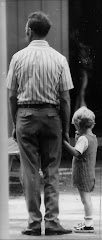Airborne Laser lets rip on first target
* 15 December 2008 by Paul Marks
* Magazine issue 2686. Subscribe and get 4 free issues.
IMAGINE swarms of aircraft patrolling the skies, zapping missiles, aircraft or even satellites in low Earth orbit with invisible, ultrapowerful laser beams.
Such laser battles in the sky may not be such a long way off, after a megawatt laser weapon was fired from an aircraft for the first time.
Although the Airborne Laser (ABL) was fired from a stationary plane at a target on the ground just a few metres away, the test marked a milestone for the weapon, developed by aerospace firms Boeing, Lockheed Martin and Northrop Grumman.
The laser was 12 years in the making and cost $4.3 billion, putting it vastly over budget. The US Missile Defense Agency (MDA) calls it the answer to "rogue states" or terror groups who equip themselves with intercontinental ballistic missiles, such as Scuds.
Yet the ABL may soon be used to shoot down a much wider range of devices - including aircraft - and is just one of a number of laser weapons now being readied for military use.
The idea behind the ABL programme is that at times of international tension, the airborne weapons will patrol the skies within hundreds of kilometres of the missile silos or launchers of a region of interest. Then, if the heat signature of a rocket launch is detected via satellite or an early warning aircraft, the ABL will track it and fire its laser at the missile while the latter is still getting off the ground and beginning to accelerate. In theory, the heat from what Boeing calls the "megawatt class" laser beam - the precise power level is classified - should cause the pressurised part of the missile to warp, bend and buckle, resulting in the missile's complete disintegration.
The beam should cause a missile to warp, bend and disintegrate above its launch site
That's a tall order by any standards, and many sceptics have questioned whether the weapon will ever get off the ground at all. But over the last few years, various aspects of the ABL's operation have been proven to work. For instance, both the twin low-power target-tracking lasers and the main laser beam's control optics have been successfully tested, while the Chemical Oxygen Iodine Laser (COIL) weapon has produced a beam in the lab. But until the test on 24 November at Edwards Air Force Base in California, the laser had not been fired from inside a Boeing 747.
That was a challenge because the COIL's six chemical modules - which rely on the reaction between oxygen molecules in an excited state and iodine to produce a light-emitting gas - are each the size of a large sports utility vehicle and collectively take up the rear half of the plane. The beam-forming and fire control system takes up the front half. This system ensures that the laser beam is accurately aligned so it does not damage or destroy the plane, and that it shoots where the target-tracker tells it to.
In two test firings, a laser beam was fired at a target for 1 second. The team now plan to test fire laser beams for longer, before preparing the aircraft for flight tests next year. "We remain on track to complete a lethal demonstration in 2009," says Rinn. "There's nothing like flaming missile wreckage to show the world the system is viable and that it works."
Until now the weapon had been pitched by the Pentagon, the MDA and its contractors as a defensive device, for destroying incoming intercontinental ballistic missiles (ICBMs). But it now appears the laser is being readied for other uses. "The ABL is not just for missile defense," says Rinn. "We're optimised for ballistic missiles but there are modifications that could be made that would give us capabilities for countering aircraft, surface-to-air missiles and cruise missiles."
The ABL's contractors have already begun simulation work to show how modifications would allow the weapon to be used to shoot down aircraft, raising the possibility that dogfights of the future could be laser battles.
Military analysts have also pointed out that the ABL's laser could be used as an anti-satellite weapon - it is thought to have a range of hundreds of kilometres. It could either heat a satellite's fuel tanks to destruction or simply blind orbiting spy cameras. Rinn says the team is not investigating this at the moment: "The design of our sensors and our particular system is for bright [heat-emitting] ballistic missiles, so we haven't looked at that one yet."
With US President-Elect Barack Obama's transitional team poring over the Pentagon's accounts, the ABL may yet be axed. Indeed, the team's talk of other military uses for the weapon may simply be an attempt to make the programme look more attractive by showing it can do more than destroy ICBMs.
Whatever happens to the ABL, the move to high-power laser weapons that use an invisible infrared beam to attack targets is already under way. Top among the early "directed energy" devices expected to be fielded is the Advanced Tactical Laser (ATL), developed by the US air force and Boeing, which uses a smaller chemical laser than the ABL and is carried in a military transport plane or large helicopter.
Monday, December 15, 2008
Subscribe to:
Post Comments (Atom)
















No comments:
Post a Comment